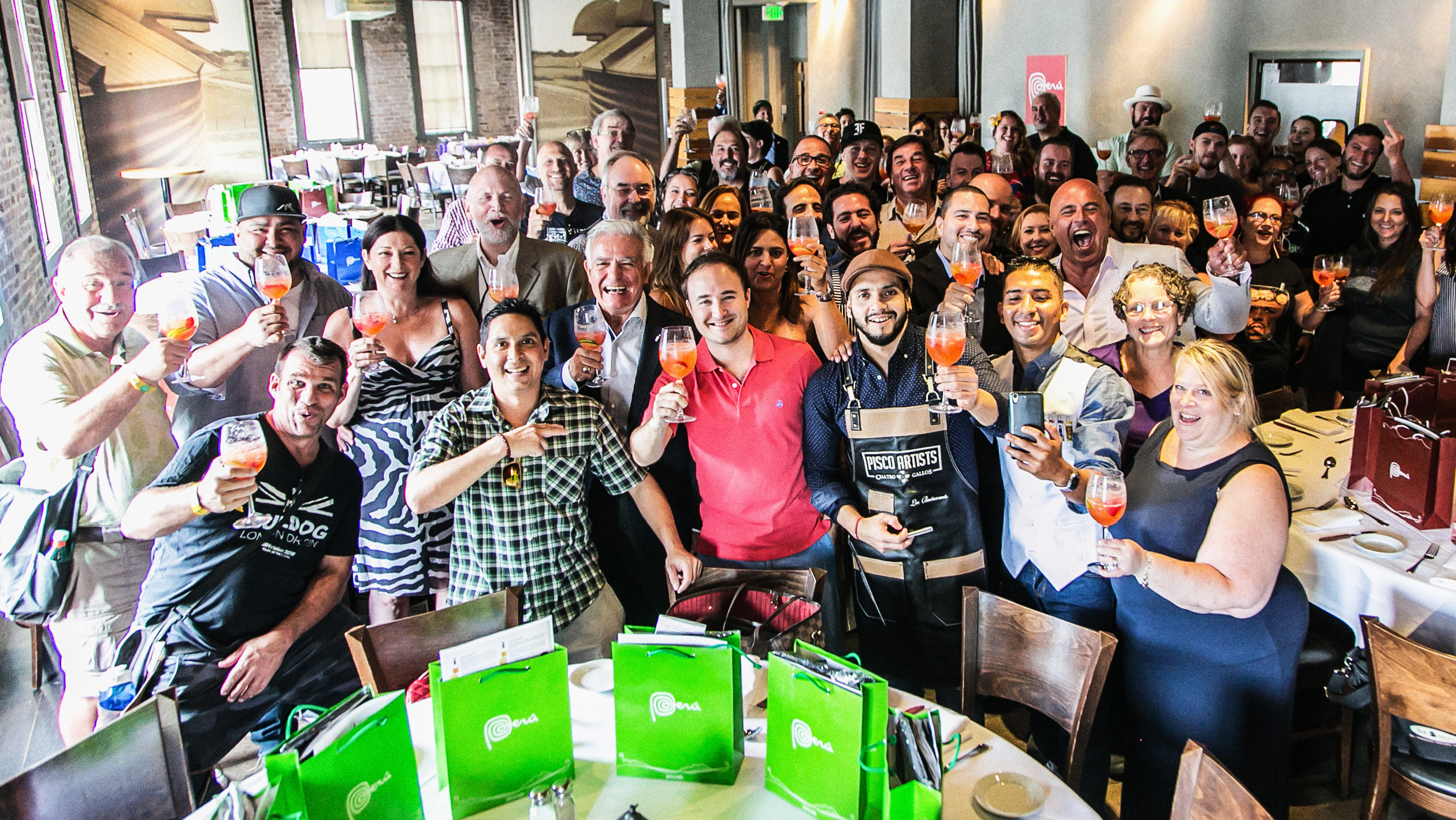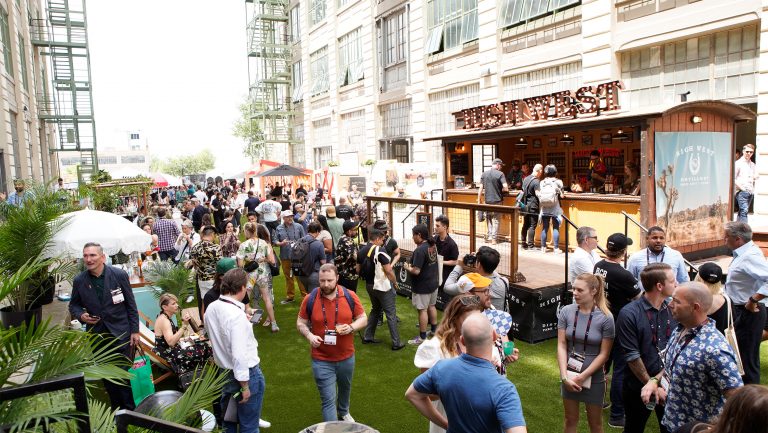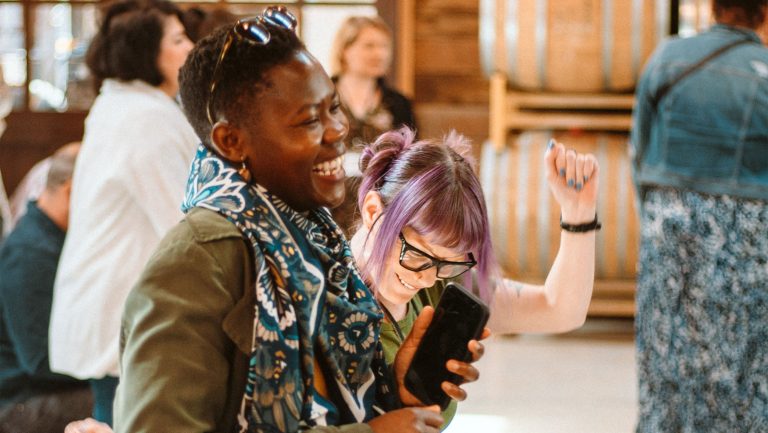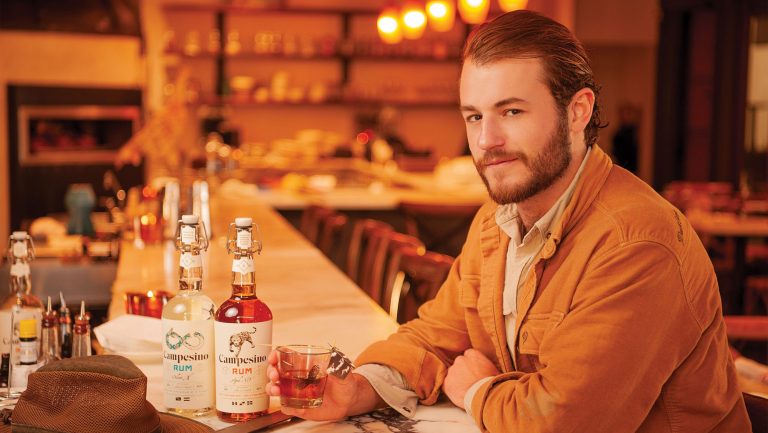The annual Tales of the Cocktail conference, now in its fifteenth year, draws about 20,000 people. Whether you decide to attend or involve your brand in it, pretty much everyone in the industry must weigh the pros and cons of showing up each year.
Tales of the Cocktail is where a lot of bartenders get their first taste of the global bartending community, says Robin Goodfellow, a partner in several Toronto bars, including Bar Raval, PrettyUgly, and Harry’s. “That’s extremely valuable exposure to people from a market not frequented by all the leaders of the industry,” he says. “TOTC has basically become a bucket-list trip for anyone who takes bartending seriously. ‘Have you read Imbibe? Have you read The Savoy? Have you been to Tales?’ It’s a check on the essential list for people who wish to have a long and prosperous bartending career.”
Participating in Tales can involve a significant investment of time and money, whether you go as observer, speaker, worker, or brand sponsor. The return on that investment can come in the form of relationship building, networking, education, and great times at parties for a bartender, while brands can hope for increased awareness, distribution connections, and future sales.

Don’t miss the latest drinks industry news and insights. Sign up for our award-winning newsletters and get insider intel, resources, and trends delivered to your inbox every week.
On the heels of Tales of the Cocktail 2017 in New Orleans, SevenFifty Daily asked bartenders, brand owners, event planners, and marketing managers—as well as Tales regulars and Tales virgins—to assess the return on investment of participating, and to share their advice on how to do it better next year.
Setting Goals and Expectations
The larger the brand, the bigger the expense—and the more metrics it takes to measure the return. For 12 years, Steve Chasen, the vice president of trade marketing for Campari America, has been promoting his brands at Tales. “Every year I have done this, I’ve had to justify the expense to executive management,” he says. A clear commercial plan going in and a financial summary afterward have been important in ensuring that Chasen’s teams are able to maintain a strong and successful presence at Tales.
“The fact is that advocacy, education, and engagement have both direct and indirect impacts on a company’s bottom line,” Chasen says, explaining that most folks in marketing (trade and brand) are interested in building mid- and long-term equity for their brands and campaigns. “If Tales is done right,” he says, “all three of these goals can be achieved.”
Chasen notes that it’s important for key members of the sales team to attend Tales, despite some reluctance from sales executives to send them. “Having salespeople there to engage with our customers, escort them to events, and bond late at night outside the Alibi is simply invaluable,” Chasen says. “A strong follow-up strategy that is collaborative and nonintrusive is also key to achieving a return on the company’s ever-growing investments.”
FEW Spirits founder and distiller Paul Hletko participated in four Tales activations this year, a pretty big sponsorship push for a relatively small brand. “I think you get the most ROI at Tales by being an active participant in all that’s there, and by giving back to the community,” Hletko says. “The scope of Tales can make it challenging to sponsor for lots of smaller brands, but we wanted to dig deep this year. FEW has been embraced by lots of cocktail venues and bartenders, and we want to make sure we give back as best we can. I don’t know that we’re looking for a direct, matching ROI; [we’re] more looking to help build the category and education. We all benefit with the rising tide that Tales helps to rise ever higher.”
While FEW invested heavily at Tales this year, other smaller brands recommend taking a more conservative approach. “It’s tough for a small brand to get attention at Tales if you’ve never been,” says Joshua Morton, the owner of Barrow’s Intense Ginger Liqueur. “I would advise folks considering a first-time run to just go and scout things out; see where your brand might fit before investing.”
For small brands, Ann Tuennerman, founder of Tales of the Cocktail, recommends consulting with the Tales team. “If you know what your goals are and you know how much you’re willing and able to spend to achieve those goals, then reach out to us in 2018 and tell us all about it,” Tuennerman says. “We’ll do everything we can to come back to you with our best ideas about how you might maximize your investment at Tales in an effort to meet your goals within your budget.”
For bartenders who attend, discipline in scheduling may be the biggest challenge. Curt Carrillo, head bartender and creative director at Sweet Liberty in Miami, bartended at five different brand events during Tales this year. “I was busy for [most] of the week, and I didn’t get to many seminars, events, and dinners that I usually fill my time with,” he says. “I enjoy what I do immensely, and being able to work the biggest parties at the biggest conference for our profession and serve a room full of my friends from all over the world is priceless. ”
Carrillo continues: “You could park your ass at Erin Rose all day and eventually see everyone you’d probably like to see (and more that you’d probably not), but it’s not like you accomplished very much. You could hit all the seminars and dinners, but this is usually for those that have established themselves and aren’t looking to expand their network anymore. I think having a clear idea of what you want to get done, and understanding that this takes a conscious decision to map out your days and nights, is the best way to fully capitalize on the experience.”
Experiment with Different Events
Francine Cohen, a consultant who helped conceive and execute events on behalf of the Trade Commission of Peru in Miami, says that the commission made a three-year commitment to be at Tales of the Cocktail to promote pisco. This gave Cohen the flexibility to suggest different event formats based on what had worked best the previous year. The events the trade commission sponsored in 2017 involved a lot more than spirits sampling: There was food, music, artwork, textiles, and costumes—a lot of over-the-top visuals and interactive elements.
In the past, the commission sponsored a seminar, tasting rooms, a Spirited Dinner, and a hands-on hybrid event. “All the events have been a success in terms of spreading the word about pisco,” Cohen notes. “However, the format of the Spirited Dinner left the least opportunity for engagement, so we decided not to repeat that event this year. The government doesn’t look for ROI the way a private company would, but there’s definitely a desire to see media attention in widely viewed outlets, new distributor relationships to form, and new accounts to open. I’m pleased to say we have hit all of those marks.”
Raj Sabharwal, a founding partner of Glass Revolution Imports, says that three years ago his company sponsored a tasting room and Spirited Dinner at Tales for about $10,000 in total expenses, but he didn’t feel it earned him a good return on his investment. “Most of the attendees were not those who made buying decisions,” he says. “While our efforts certainly helped create brand awareness, we did not see an immediate increase in sales.”

So Sabharwal changed focus to group tasting rooms. In 2017, Glass Revolution participated in the Gin & Tonic Experience group tasting room with Mahon Gin. And at the Indie Spirits That Rock tasting event, the company showed and sampled most its portfolio. This year the sponsorship cost was only a little over $1,000, plus travel and product expenses.
“Both of these events were well attended,” Sabharwal says. ”We were swamped. We received positive comments and a number of leads on new clients to sell to. So, for our money, events where smaller, independent brands can be showcased are better for us. These allow us to compete with the larger brands and stress our independence, craft production, and small batch. Smaller brands, which could be the majority brands of tomorrow, need venues where they can shine.”
Morton, of Barrow’s Intense Ginger Liqueur, says he first came to Tales as a participant, and in later years as a sponsor in the Indie Spirits tasting room. Barrow’s Intense was a cosponsor of the Tales’ official cocktail competition in 2016, but Morton didn’t repeat it “as it was difficult to gauge its effectiveness.”
“We probably spend less than most companies,” says Morton, “but it’s still several thousand dollars’ worth of investment just to attend for the week and do the two-hour tasting room. The ROI is very hard to quantify. In some ways you feel you need to be there just to remind people you exist—for a small brand (or even a big brand), it seems like it would cause concern if you didn’t show up: Are they struggling? Are they going to be around?”
For brands interested in procuring distribution deals, Tales’ Tuennerman recommends participating in the Meet the Distillers Happy Hour as an affordable option. For brands interested in engaging with bartenders, she suggests a Brand Education Seminars as a focused opportunity to educate bartenders about a specific product. Tuennerman also recommends that smaller brands leverage their relationships with larger brands to increase exposure. “For example, a small vermouth company might work toward building a relationship with a larger whiskey company to partner on a Manhattan cocktail themed tasting event,” she says. “This is also another type of opportunity that’s ideal for splitting the cost with a complimentary brand of similar size.”
Is Tales Better for Newbies?
Jennifer Ackrill, director of mixology for the Hawaiian bars Top of Waikiki and Sky Waikiki, says her company spent around $10,000 to send several bartenders to Tales this year. They attended 15 seminars among them. “The company paid for four of us to go, with the expectation that [young bartenders] would be able to come back and impart some knowledge to the rest of the staff,” Ackrill says. “They had to write detailed reports for each seminar they attended.”
She says her bartenders found the parties inspiring but the seminars to be a mixed bag. Seminars that provided the most actionable information were the most popular with her team. Some they found to be too niche, several “veered off topic or never hit the topic at all,” and one was described by her staff as “two dudes that were reminiscing about the old days.”
Toronto’s Robin Goodfellow has attended many Tales, but this year he held down the fort at home while two of his youngest bartenders flew to NOLA. He says that Tales is “practically essential” for new bartenders but that as a veteran he doesn’t feel the pull quite as strongly as he once did.
“Years ago,” Goodfellow says, “if you missed TOTC or didn’t pack your week with seminars and events, there would be a fear of missing something vital in the growth of the industry. [But] my bartenders didn’t come back with the energy I used to have when I returned, which was very surprising. No spirits blew them away, no seminars stood out—but how much they enjoyed the networking and the ‘over the top’ events were spoken about in detail. Are the seminars as important as they used to be? Do young bartenders take home the same amount of knowledge or inspiration they did back in 2011 or 2012? That’s up for debate. I guess for me, attending TOTC is like checking the oil of your car now, whereas before it was like learning to drive.”
While new bartenders today have a long list of available opportunities for furthering their education and advancing their careers, Tales participation is as relevant as ever, according to Tuennerman. “One thing we’re certain of is that the bartender who is just starting out today is very different from the bartender who was just starting out 10 years ago,” she says. “We hope to play an ongoing role for new bartenders, to be an essential part of the curriculum, as it were.”
Tuennerman also notes that Tales is committed to developing advanced programming to maintain interest and relevance for more senior members of the trade. “Our industry is relatively young, at least as we know it today, and so we’re really just beginning to see a whole generation of master bartenders, whereas a decade ago, there were only a few dozen,” she says. “We’ve begun to build out the foundation of an advanced program we hope to launch next year.
Anistatia Miller, a publisher, author, and public speaker who has participated in Tales of the Cocktail since the earliest days, decided to stay home the last two years. She says that although in the beginning her ROI was great, it has declined. She says of the early days, “There was no Facebook, Twitter, Instagram, or a myriad of other free channels to get your message out beyond your local sphere. So having an opportunity to touch a new audience to approach and revisit was special. ROI was immense.
“As with many concepts,” Miller continues, “once a great idea catches on, everyone wants to be on the bandwagon. Problem is, the bandwagon can only support a certain amount of weight before it slowly loses efficiency, effectiveness, and viability.”
Miller noted the high cost to self-sponsored speakers, including not only the work of preparing a Tales seminar, but also travel and on-the-ground expenses. As for the return on the investment, while Miller acknowledges that in-person connections made at cocktail conferences have been crucial—and in fact she declared that the only ROI she measures at Tales is these connections—in the age of social media there’s less need for her to reconnect in person annually.
“The best contacts we have made in 25 years in this business have come from traveling to a specific city and walking into bars and local bar shows,” Miller says. “Best ROI on the planet. Second best ROI comes from nurturing great contacts in the social media arena.”
The Importance of Proper Planning
New Orleans’ bartenders often miss most or all of Tales, as they’re hard at work serving drinks to the visitors to the convention, but Hope Clarke, the bar manager at New Orleans’ Cochon, was able to fit a lot in. “I had to really think,” she says, “about how to spread my energy for events, seminars, tastings, and most importantly, my incredibly busy restaurant.
“I made it to four seminars, three of which were ‘ethics-service ideals’–based and one ‘technical,’” Clarke says. “I think the quality of education within those first three seminars was more focused, mature, and engaging than [what I’ve experienced in] the last two years. Both my first-time Tales attendee service manager and myself found plenty of notes and management techniques to implement with our staff. Because of this, I would say that the $400 my restaurant spent for us to go all week with tasting bands was worth it.”
While bartenders in New York and San Francisco are generally spoiled when it comes to distiller visits and educational seminars, bartenders from other cities say they’re grateful for the opportunities at Tales to hear from industry experts who don’t make it to their markets. This was reflected in their comments: Several first-time Tales attendees said that next year they want to “schedule better” and “buy seminar tickets earlier before the good ones sell out.”
Sean Umstead, general manager of St. Roch Fine Oysters + Bar in Raleigh, North Carolina, signed up for five seminars. “I come from a liquor-control state, and brands don’t spend quite [as much] time here,” he says. “The seminars were, by and large, excellent. Full of useful info, well-prepared speakers, and great drinks. I also really appreciated the presence of international bartenders on almost every seminar panel. They brought great perspective.”
A first-time attendee, Stefan Was, the owner of Porco Lounge & Tiki Room in Cleveland, offered advice to next year’s newbies: “Budget time before money. There are so many seminars, and attending all the ones you want requires meticulous planning and forethought before they sell out. Plan your days carefully, and let the rest take care of itself.”
Tuennerman says, “Tales has gotten bigger, but I think people often overlook the more prominent factor in this situation… the industry has gotten bigger. Is the industry too big? Absolutely not. Can Tales be overwhelming? Absolutely, and so can a shift at any number of the world’s best bars, but only if you go into it without being prepared. Tales is an investment for every bartender and every brand. Going to Tales without a plan is undermining that investment from the start, which means your ROI is devalued before day one.”
While it would be impossible to summarize the ROI of Tales of the Cocktail for all of its 20,000 attendees, some themes emerge from these interviews. It’s important to identify specific goals before attending. Determine how you or your brand will measure ROI in advance: gaining education, developing your network, growing brand awareness, or other benchmarks. Then budget the time and money to achieve those goals. Finally, after the week has ended, follow up on new leads and connections to ensure that Tales provides a return on the investment throughout the year to come.

Dispatch
Sign up for our award-winning newsletter
Don’t miss the latest drinks industry news and insights—delivered to your inbox every week.
Camper English is an international cocktails and spirits writer, speaker, and consultant, with a focus on the science of booze and big clear ice. His work has appeared in Popular Science, Cook’s Science, Whisky Advocate, Saveur, Details, the San Francisco Chronicle, and many other publications.







